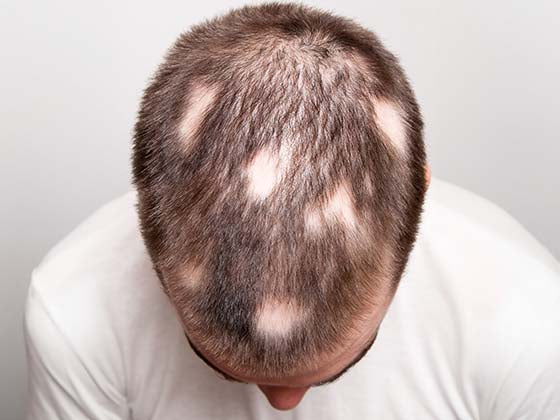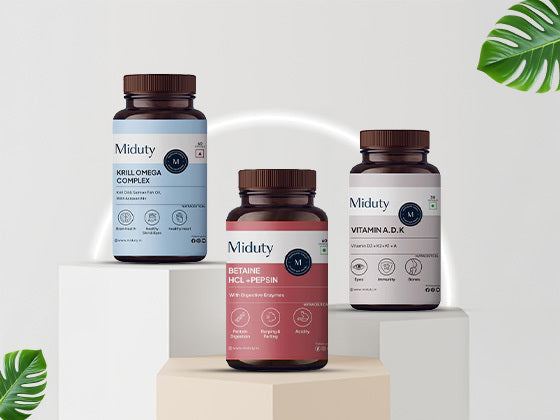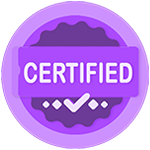When comparing European and Korean sunscreens, both are excellent choices, but there are a few key distinctions that may make one better suited to your skin type, preferences, and lifestyle. This article provides a comprehensive overview to help you decide which is best for your skin.
Understanding the Key Features of European and Korean Sunscreens

European and Korean sunscreens differ principally in terms of UV filters, regulatory frameworks, and general emphasis on skincare benefits. European sunscreens frequently use newer, broader-spectrum filters, but Korean sunscreens prioritize lighter textures and added skincare components such as aloe vera and vitamin E.
What Makes European Sunscreens Stand Out? Advanced UV Filters Explained

European sunscreens frequently stand out for their use of sophisticated and more photostable UV filters, which provide broad-spectrum protection against both UVA and UVB radiation. They use newer, more effective UVA ray-blocking filters that are also more stable in sunshine. Here's a more extensive explanation of why:
-
Advanced UV filters: European sunscreens are more likely to contain newer, more effective UV filters than those in other regions.
-
Broad-spectrum protection: European sunscreens are intended to provide complete protection against both UVA and UVB radiation, which is critical for preventing long-term skin damage and sunburn.
-
Photostability: Advanced filters are also photostable, which means they do not degrade in sunlight, providing consistent protection over time.
-
Regulatory differences: The EU has its own regulations and testing methods for sunscreen products, including the requirement for broad-spectrum protection, which influences the types of filters used in European sunscreens.
-
Focus on UVA protection: UVA rays are known to penetrate deeper into the skin and cause long-term damage like premature aging and photoaging; European sunscreens frequently place a greater emphasis on UVA protection.
The Appeal of Korean Sunscreens: Lightweight Formulas and Active Ingredients

Korean sunscreens are popular due to their lightweight, non-greasy formulas and the inclusion of beneficial active ingredients that deliver a comfortable and effective sun protection experience. They are commonly chosen for their ease of application, ability to wear well under makeup, and moisturizing or soothing properties, which make them suitable for various skin types, including sensitive skin. The key features of korean sunscreens:
-
Lightweight and non-greasy formulas: Korean sunscreens, in contrast to conventional sunblocks, frequently leave the skin feeling silky and non-sticky, making them suitable for everyday use.
-
Advanced UV filters: They provide broad-spectrum protection against UVA and UVB rays by using efficient SPF filters.
-
Additional skincare advantages: Hyaluronic acid, snail mucin, and vitamin E are among the ingredients found in many Korean sunscreens. These ingredients have anti-aging, brightening, and hydrating properties.
-
Ease of application and reapplication: Their lightweight texture makes them simple to apply and reapply, providing consistent sun protection throughout the day.
-
Suitable for a variety of skin types: Korean sunscreens are gentle and effective, making them ideal for sensitive or dry skin.
-
Innovation and efficacy: The Korean skincare industry is known for its innovative approach, which has resulted in advanced formulas that provide both sun protection and skincare benefits.
Regulatory Differences Between Europe and Korea: How They Shape Sunscreen Quality

The regulatory differences between Europe and Korea influence the quality, safety, and innovation of sunscreens produced in each region. Understanding how these laws function might help you make more informed decisions about which sunscreens to use.
-
UV filter availability: Europe has a limited but high-quality selection of authorized filters. Any new filter takes years to be approved, but it goes through comprehensive safety and performance testing. Korea, on the other hand, is more adaptable, typically approving and integrating new filters more quickly, encouraging speedier texture and ingredient innovation.
-
Emphasis on protection vs. aesthetics: The EU regulations prioritize broad, photostable, and proven protection over aesthetics, particularly UVA, which causes deep skin aging. On the other side, Korean standards prioritize daily usage, comfort, and integration with skincare, making sunscreen easier to wear every day.
-
Innovation cycles: Korean brands evolve swiftly, with new or reformulated items being released on an annual basis. European brands, on the other hand, innovate at a slower pace due to the lengthy filter clearance procedure, but their products are more trustworthy and consistent.
Comparing Protection Levels and Cosmetic Elegance

Both protection level and physical elegance are significant considerations when selecting sunscreen, although the priorities differ. Dermatologists frequently prioritize protection level, broad range, and affordability, whereas consumers commonly favor esthetic elegance and ease of use. Cosmetic elegance can be a barrier to applying sunscreen for people with darker skin tones, but it's also essential for sticking to a daily sun protection regimen.
-
Physicians' priorities: Research indicates that when suggesting sunscreens, physicians frequently emphasize sun protection factor (SPF), broad-spectrum protection (UVA/UVB), and pricing. Cosmetic elegance, while considered, is frequently ranked lower in importance.
-
Consumer preferences: Consumers frequently place a higher value on cosmetic elegance, which includes attributes such as quick absorption, simplicity of application, a translucent finish, and a non-greasy texture.
-
Cosmetic elegance and darker skin tones: For those with darker skin tones, cosmetically unappealing sunscreens (such as those that leave a white cast) can be a substantial obstacle to using. These issues can lead to less adherence to sun protection, which is critical for preventing skin damage and disorders such as melasma.
-
Importance of adherence: Adherence to daily sun protection is critical for preventing skin aging, skin cancer, and other sun-induced harm. Cosmetically appealing sunscreens can stimulate regular use, resulting in improved overall skin health.
-
Innovation in sunscreen: Sunscreen formulation innovation is being pursued to create solutions that provide both effective protection and cosmetic appeal, particularly for people with darker skin tones.
-
Balancing act: The ideal sunscreen lotion combines high levels of protection with a cosmetically appealing composition that encourages daily use.
UVA Protection Standards: PA++++ vs Broad-Spectrum Ratings
PA++++ sunscreen ratings imply a very high level of UVA protection, as measured by a high PPD (Persistent Pigment Darkening) number, usually greater than 16. In contrast, "broad-spectrum" sunscreen is a broader word that refers to protection against both UVA and UVB radiation, but it does not define the intensity of UVA protection. A broad-spectrum sunscreen may have a high SPF, but it may also have a lower PA rating, indicating that it may not provide the same level of UVA protection as a PA++++ sunscreen.
-
PA++++: This is the highest level of UVA protection in the PA system, suggesting a very great resistance to UVA rays. A PA++++ sunscreen has a PPD value of 16 or higher, indicating that it is 16 times more effective against UVA radiation than no sunscreen at all.
-
Broad-spectrum: This word indicates that the sunscreen protects against both UVA and UVB radiation, but it does not specify the level of UVA protection. A broad-spectrum sunscreen with a high SPF (for example, SPF 50) may nevertheless be PA+, PA++, or even PA+++, depending on the extent of UVA protection.
-
UVA vs. UVB: UVA rays are long-wave ultraviolet rays that can penetrate deep into the skin and cause premature aging, wrinkles, and other skin problems. Sunburns, on the other hand, are caused by UVB rays, which are shorter-wave ultraviolet rays.
Why choose PA++++: If you want the best UVA protection, use a sunscreen with a PA++++ rating. This type of protection is especially crucial for people who are more susceptible to sun damage, such as those who have pale skin or spend a lot of time outside. In essence, whereas broad-spectrum sunscreen protects against both UVA and UVB rays, PA++++ implies a far higher level of UVA protection, making it the ideal choice for people wanting the most thorough defense against sun damage.
Texture and Application: Lightweight vs Heavy-Duty Formulations

Korean "lightweight" sunscreens and European "heavy-duty" sunscreens differ greatly in texture and application. Korean sunscreens are often lightweight, non-greasy, and quickly absorbed, with a fluid or gel-like texture that blends perfectly into the skin and works well under makeup. European sunscreens, on the other hand, may have a thicker, more creamy consistency, providing a more powerful protective barrier and necessitating a little more work to apply and rub in.
Korean Sunscreen:
-
Texture: Lightweight, fluid, or gel-like, with quick absorption and a non-greasy finish.
-
Application: Blends easily into the skin, does not leave a sticky residue, and is frequently intended to be worn under makeup or over moisturizer.
-
Purpose: Many Korean sunscreens are designed for daily use, with a focus on comfort and lightweight feel.
-
Ingredients: Hydrating ingredients such as hyaluronic acid or aloe are commonly used to improve the feel of the skin.
-
Examples: Many Korean sunscreens and products are advertised as "lightweight" or "non-greasy," with a fluid or gel texture.
European Sunscreen:
-
Texture: Thicker, creamier, and may take more effort to rub in, but provides a more substantial feel and protection.
-
Application: While still intended to provide broad-spectrum protection, the texture may be thicker, requiring more time to absorb.
-
Purpose: Often formulated to provide higher levels of protection, with thicker textures creating a more visible barrier.
-
Ingredients: Zinc oxide or titanium dioxide may be present, resulting in a thicker texture and immediate protection.
-
Examples: Many European brands are known for their thicker, cream-based sunscreens, which frequently emphasize high SPF and broad-spectrum coverage.
Water Resistance and Longevity: Which Sunscreen Holds Up Better?

When it comes to water resistance and longevity, European sunscreens typically outperform — especially for outdoor or prolonged sun exposure.
European Sunscreens
-
Stricter labeling: The EU requires proof of water resistance (e.g., "40 minutes" or "80 minutes" under strict conditions) before making that claim.
-
Real-world durability: A lot of European formulas are made for sensitive skin, sports, or beaches.
-
Broad UVA/UVB and photostability: Advanced filters that improve protection over time and with exposure to water and perspiration.
Korean Sunscreens
-
Focused on daily urban use: Lightweight and cosmetically elegant, it is ideal for wearing under makeup or indoors.
-
The non-greasy texture makes it ideal for reapplying throughout the day.
Choosing the Right Sunscreen for Your Skin Type

Choosing the proper sunscreen for your skin type is critical—not only for sun protection, but also for comfort, compatibility, and overall skin health. Here's how to select your ideal match based on your skin's specific demands, whether you want Korean elegance or European endurance.
-
Oily or acne-prone skin: Look for lightweight, non-comedogenic formulas, oil-free or gel-based, matte finish, or ingredients that control sebum (e.g., silica, niacinamide).
-
Dry or dehydrated skin: Look for sunscreens that are creamy or moisturizing, contain hyaluronic acid, ceramides, or glycerin, and have a dewy or satin finishes.
-
Sensitive or reactive skin: Look for fragrance-free, alcohol-free, mineral or hybrid filters (e.g., zinc oxide, titanium dioxide) and soothing substances (Centella asiatica, panthenol).
-
Combination skin: Look for balanced hydration, lightweight but not drying, and hybrid textures (e.g., gel-cream).
-
Mature or pigmentation-prone skin: Look for strong UVA protection (UVA-PF or PA++++), anti-aging compounds (niacinamide, antioxidants, peptides), and no white cast for darker skin tones.
Sensitive Skin Solutions: Finding Gentle Formulas That Work

Choosing the best sunscreen for sensitive skin can be difficult. You need something that provides adequate sun protection without causing irritation, outbreaks, or discomfort. Fortunately, there are gentle, well-formulated sunscreens that are intended to protect your skin while reducing the danger of responses. The primary characteristics of sunscreens for sensitive skin are:
-
Fragrance-free: Fragrances may cause allergic reactions or irritation.
-
Alcohol-free: Alcohol, especially denatured alcohol, can dry and irritate the skin.
-
Mineral (physical) filters: Zinc oxide and titanium dioxide are less likely to cause irritation than chemical filters.
-
Soothing ingredients: To soothe and heal the skin, look for sunscreens that contain ingredients like chamomile, aloe vera, centella Asiatica, or panthenol.
-
Non-comedogenic: Prevents clogged pores, making it perfect for sensitive skin prone to acne.
Best Options for Humid Climates: Korean vs European Picks

Choosing the best sunscreen for humid areas is all about finding formulas that provide sufficient UV protection while being lightweight, non-greasy, and able to endure sweat and moisture without feeling uncomfortable on the skin. Humid conditions can induce increased oil production and make sunscreen feel heavy, resulting in closed pores and irritation. Whether you prefer Korean or European sunscreens, they both provide excellent solutions for such settings. When choosing a sunscreen for humid weather, consider:
-
Oil-free or mattifying formulas to avoid excessive shine.
-
Lightweight gel-based textures that absorb quickly and leave no residue.
-
Water/sweat resistance to withstand the heat.
-
To prevent breakouts, use non-comedogenic ingredients that will not clog pores.
-
Broad-spectrum sunscreen (SPF + UVA) protects against sunburn and aging.
Korean vs European Picks
-
Korean sunscreens are known for their lightweight, skincare-like textures, making them ideal for humid climates where comfort and breathable formulas are essential.
-
European sunscreens are known for their high durability and advanced formulations, which provide excellent protection in hot and humid weather.
Factors to Consider When Selecting Your Ideal Sunscreen

When choosing your ideal sunscreen, there are various elements to consider to ensure that it adequately protects your skin while also being pleasant and appropriate for your skin type and lifestyle. The main elements to consider when selecting sunscreen are
-
Skin type: Your skin type greatly influences which sunscreen will be most effective for you. Here's what you should check for based on your skin's requirements: Look for sunscreen that is oil-free, non-comedogenic, and has a matte finish. Gel- and water-based compositions will be the lightest and most breathable. Hydrating sunscreens with hyaluronic acid, glycerin, or ceramides are ideal for dry or dehydrated skin. These will keep your skin hydrated but not oily. Choose sunscreens that are fragrance-free, alcohol-free, mineral-based, and have calming ingredients like Centella Asiatica or Aloe Vera. Look for formulations with hydration and oil control, such as gel-cream or hybrid textures.
-
Sun protection factor (SPF): The SPF value indicates how well a sunscreen protects against UVB rays that cause sunburn. SPF 30 offers 97% UVB protection and is ideal for daily use or low-exposure scenarios. SPF 50 offers 98% UVB protection and is suited for prolonged sun exposure. SPF 50+ provides maximum UVB protection and is ideal for prolonged sun exposure, outdoor sports, or beach days.
-
UVA Protection (PA or Broad-Spectrum): UVA rays cause premature aging, wrinkles, and contribute to skin cancer. Make sure your sunscreen also offers UVA protection such as PA Rating (Korean standard): Indicates UVA protection. PA+ offers some UVA protection. PA++ offers moderate protection. PA+++: High protection. Very high protection (best for preventing skin aging) is provided by PA++++. On the other side, this word indicates that the sunscreen protects against both UVA and UVB rays. Look for broad-spectrum sunscreens to offer optimum UVA protection.
-
Water resistance: Sunscreens that are water-resistant or sweat-resistant are essential if you're going swimming or exercising outside. They are intended to remain in place even when you sweat or swim, providing continuous protection. For mild perspiration or light exertion, 40 minutes of water resistance is sufficient. For swimming, perspiration, or strenuous activity, 80 minutes of water resistance is recommended.
-
Formula type & texture: The texture of the sunscreen is important in determining how comfortable and simple it is to apply, especially if you wear it on a daily basis. Gel-based or water-based solutions are lightweight and great for oily or acne-prone skin. Cream or lotion compositions are ideal for dry or dehydrated skin, as they provide more moisture. Sprays are simple to use on bigger areas, but they may require a thicker layer to be effective. They can also be difficult to control. Select the texture that best suits your skin's needs and how you want the sunscreen to feel throughout the day.
-
Ingredients to avoid: Some sunscreen components may irritate the skin, block pores, or cause allergic responses. Watch out for common offenders including scents, alcohol, and oxybenzone or octinoxate. If you have sensitive skin or are prone to breakouts, choose sunscreens that do not include these chemicals.
-
Environmental and lifestyle considerations: If you are participating in sports, swimming, or spending a lot of time outside, consider sunscreens that are water-resistant, have a high SPF, and give broad-spectrum protection. Lighter, everyday sunscreens may be adequate for daily use, particularly if you live in a low-sun climate. Choose SPF 30 or 50. If you wear makeup, consider using sunscreen sprays or powders that may be easily reapplied without upsetting your makeup.
-
Sustainability and ethical factors: If you care about the environment, search for reef-safe sunscreens that do not contain dangerous chemicals like oxybenzone or octinoxate, both of which can harm coral reefs. Many firms are increasingly providing environmentally friendly packaging or committed to cruelty-free testing.
Final Thoughts on European and Korean Sunscreens

While both European and Korean sunscreens are excellent choices, the choice ultimately depends on individual preferences and specific needs. If you value scientific formulation and long-lasting protection, European sunscreens may be a better option. Korean sunscreens, on the other hand, are ideal for those who seek lightweight, moisturizing, skincare-infused solutions.
































